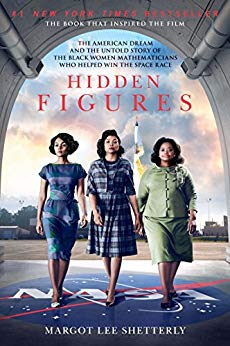

This article is an excerpt from the Shortform summary of "Hidden Figures" by Margot Lee Shetterly. Shortform has the world's best summaries of books you should be reading.
Like this article? Sign up for a free trial here .
Where was Newsome Park, and who lived there? What were residents of Newsome Park Known for?
Newsome Park was a community in Hampton Roads, Virginia, where many black NASA employees settled during World War II and the post-war period. In the middle of a segregated city, the residents of Newsome Park formed a tight-knit community, which is highlighted in the book Hidden Figures.
Hampton Roads: A Segregated City
As progressive and forward-looking as Hampton Roads may have seemed at first glance to someone like new NASA employee Dorothy Vaughan, it was still a segregated city of the American South at the height of the Jim Crow era. Black people and white people had separate entrances to get on buses, and blacks were expected to give up their seats to whites if the white section was filled. African-Americans who were caught sitting in white sections could be fined, arrested, or even dragged off the bus and beaten by police. These practices even extended to black soldiers in uniform. Indeed, segregation was powerfully entrenched in the nation’s historical experience and was an unmistakable feature of life wherever one traveled, especially in the South.
The injustice seemed all the more perverse during World War Two. Black Americans were being asked to fight and die to defeat genocidal Nazis in Europe, yet were simultaneously being told to accept a brutal and violent system of repression at home. The irony wasn’t lost on many. Black scholars like Altona Trent Johns noted the distressing similarities between the German treatment of Jews and southern whites’ treatment of their black fellow citizens, a theme that was echoed all throughout black civil society—in churches, the press, sororities and fraternities, and civic organizations. The question was clear: What are we fighting for? Victory in the war overseas had to be matched by victory over white supremacy at home.
Newsome Park
The new black economic migrants to the region, like Dorothy, settled in a neighborhood called Newsome Park. The community was built during the Depression, a subdivision designed and built “for blacks, by blacks.” It became a focal point of the black community in Hampton Roads, attracting residents from all different occupations and income levels.
Because legal segregation prohibited so many of Newsome Park’s residents from full participation in Virginia’s economy and society, the community (like many other black communities throughout the South) became economically and culturally self-sufficient. Newsome Park featured its own community center with a full kitchen and banquet space, basketball and tennis courts, and a baseball diamond. The shopping center was home to a bustling grocery store, drugstore, barbershop, and even a TV repair shop.
In short, Newsome Park featured all the amenities that the upwardly mobile young black families who’d moved to Virginia needed to keep their morale high and find new sources of community in a new town. As the new black migrants came and settled, they saw that their children became fast friends with the children of the other families who’d recently made their way to Virginia.
The Newsome Park Community
Newsome Park was a strong community with strong advocates. In 1952, Katherine’s in-laws told her and her husband about the job opportunities in Hampton Roads. Her husband’s brother-in-law, Eric Epps, encouraged Katherine to apply for a position at Langley, where she could finally fulfill her dream of working as a mathematician (and earn three times what her salary had been as a teacher). Eric also said that Jimmy could find work at the Newport News Shipyard—thus, there was a promise of good federal jobs for the couple, representing a major new opportunity for them and their three daughters.
As director of the Newsome Park Community Center, Eric was a strong advocate for the neighborhood and was extremely well-connected with the black community and its civic and cultural institutions all throughout the Virginia peninsula. If anyone would be able to smooth the Gobles’ transition to the region, it would be Eric.
His offer was too good to resist and tugged at Katherine’s insatiable intellectual curiosity: the family made the momentous decision to leave the mountains of West Virginia and head for Hampton Roads. Well-paid federal jobs like the ones awaiting Katherine and Jimmy helped build the emerging black middle class. Like those who had come to Hampton Roads during World War Two, Katherine found a ready-made community waiting to accept her and her family, helping her fill the void of the world she’d left behind in her native and beloved West Virginia. As an added bonus, Katherine would be reporting to her old neighbor from West Sulphur Springs—Dorothy Vaughan.
The Newsome Park Community proved to be a strong and vibrant place, where residents formed a culture based on work and family. In the middle of segregated Hampton Roads, Newsome Park thrived.

———End of Preview———
Like what you just read? Read the rest of the world's best summary of Margot Lee Shetterly's "Hidden Figures" at Shortform .
Here's what you'll find in our full Hidden Figures summary :
- How brave black women were instrumental to the American space race
- How they confronted racism and sexism to forge a better future
- Their enduring legacy in American history






